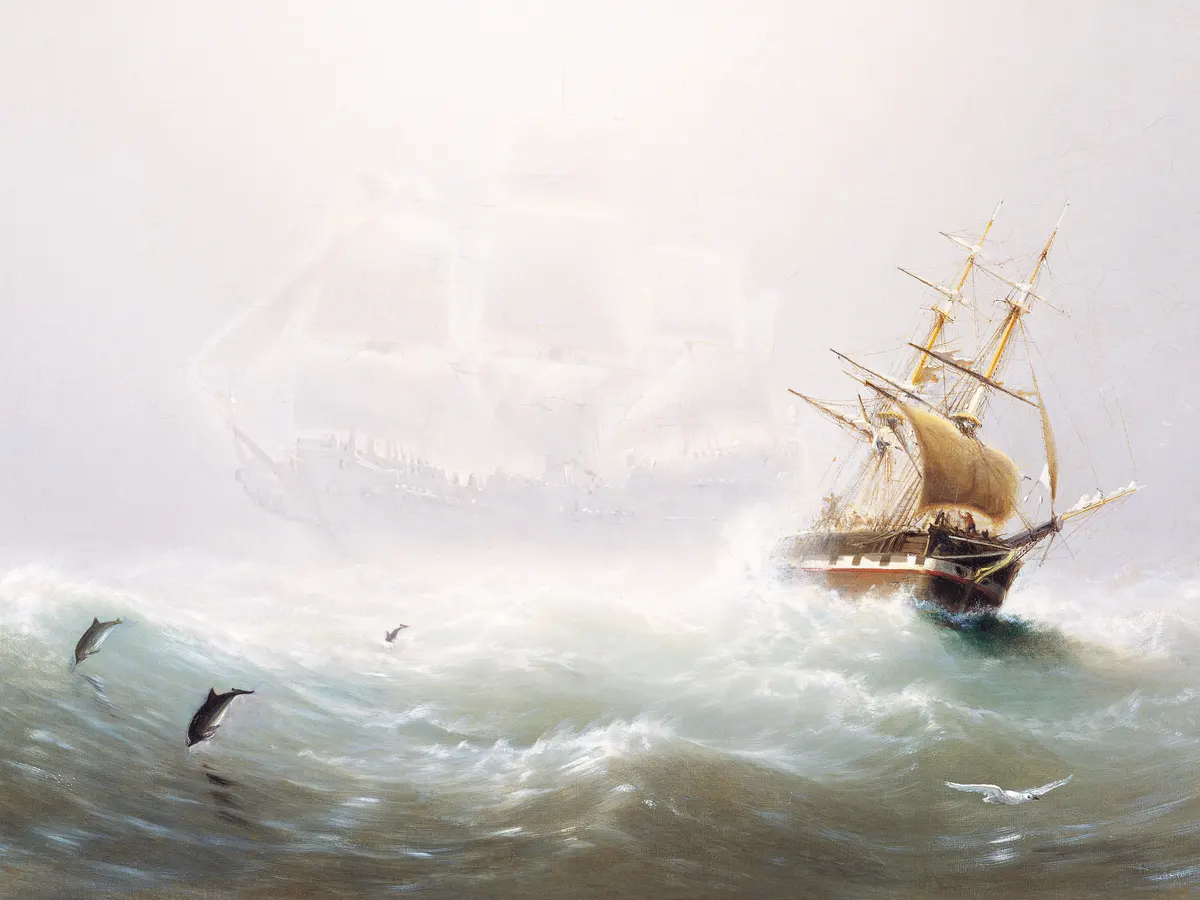Old Sea Legends For Crew is our monthly blog that takes you through the lore and tales of the sea. In this article, we turn our eye to the legend of the Flying Dutchman.
The Flying Dutchman, known as De Vliegende Hollander in Dutch, is a legendary ghost ship, doomed to forever roam the seas without ever reaching port. The origins, and earliest ‘accounts’ (that we know of) of this ghostly ship can be traced back to the 17th-century Golden Age of the Dutch East India Company (VOC) and the zenith of Dutch maritime dominance.

Pop Culture
You might be familiar with the Pirates of the Caribbean franchise, whose main antagonist is the octopus/crab-like Davy Jones who commands the Flying Dutchman. However, his unnerving appearance is not the same in traditional myths and legends. The blockbusting film series invented that image of the infamous captain.
Origins
The first print reference to the ship appears in Travels in various part of Europe, Asia and Africa during a series of thirty years and upward (1790) by John MacDonald, the first prime minister of Canada:
“The weather was so stormy that the sailors said they saw the Flying Dutchman. The common story is that this Dutchman came to the Cape in distress of weather and wanted to get into harbour but could not get a pilot to conduct her and was lost and that ever since in very bad weather her vision appears.”
Another early literary reference appears in Chapter VI of A Voyage to Botany Bay (1795) (also known as A Voyage to New South Wales). This is attributed to George Barrington, a London socialite (1755–1804):
“I had often heard of the superstition of sailors respecting apparitions and doom, but had never given much credit to the report; it seems that some years since a Dutch man-of-war was lost off the Cape of Good Hope, and every soul on board perished; her consort weathered the gale, and arrived soon after at the Cape. Having refitted, and returning to Europe, they were assailed by a violent tempest nearly in the same latitude. In the night watch some of the people saw, or imagined they saw, a vessel standing for them under a press of sail, as though she would run them down: one in particular affirmed it was the ship that had foundered in the former gale, and that it must certainly be her, or the apparition of her; but on its clearing up, the object, a dark thick cloud, disappeared. Nothing could do away the idea of this phenomenon on the minds of the sailors; and, on their relating the circumstances when they arrived in port, the story spread like wild-fire, and the supposed phantom was called the Flying Dutchman. From the Dutch the English seamen got the infatuation, and there are very few Indiamen, but what has some one on board, who pretends to have seen the apparition.”
Legend
Legend has it that the ship’s captain entered into a pact with the devil, having gained fame for accomplishing the journey between Holland and Java in an unbelievably short time. Despite their ability to elude capture, the crew eventually committed a grievous crime (alternatively, some versions suggest they contracted the plague). This lead to the vessel being banned from entering ports. Undeterred by the prohibition and confident in his ability to swiftly navigate, the captain, amidst a severe storm, endeavored to round the Cape of Good Hope, a rocky headland on the Atlantic coast of the Cape Peninsula in South Africa.
As the terrified crew implored the captain to seek shelter, he defiantly pledged to brave the elements and round the Cape, even if it meant battling the waves until Judgment Day. The ship foundered in the tempest, and everyone onboard met their demise. Yet, in keeping with the captain’s oath, the Flying Dutchman persists in sailing the seas, its cursed crew still striving to complete the ill-fated voyage.
Poetry
The poet Thomas Moore mentions the vessel in the north Atlantic as part of his poem Written on passing Dead-man’s Island in the Gulf of St. Lawrence, Late in the evening, September 1804:
“Fast gliding along, a gloomy bark / Her sails are full, though the wind is still, / And there blows not a breath her sails to fill.”
A footnote adds:
“The above lines were suggested by a superstition very common among sailors, who call this ghost-ship, I think, ‘the flying Dutch-man’.”
Accounts & Illusions
“At 4:00 AM the Flying Dutchman crossed our bows, a strange red light as of a phantom ship aglow. Thirteen persons altogether saw her, but whether it was van Dam of the ‘Flying Dutchman’, or something else, remains unknown.”
But of course, accounts can always be based on an illusion. There is the optical effect known as looming. This occurs when rays of light are bent across different refractive indices. This could make a ship just off the horizon appear hoisted in the air.
To Conclude
There are numerous versions of the story about the Flying Dutchman. Tales suggest it is a a harbinger of misfortune, and sightings of the spectral vessel were considered ominous at best by sailors.
To keep up to date with the latest Superyacht Content News, click here.
Sign up to our Newsletter below:

.gif)




















